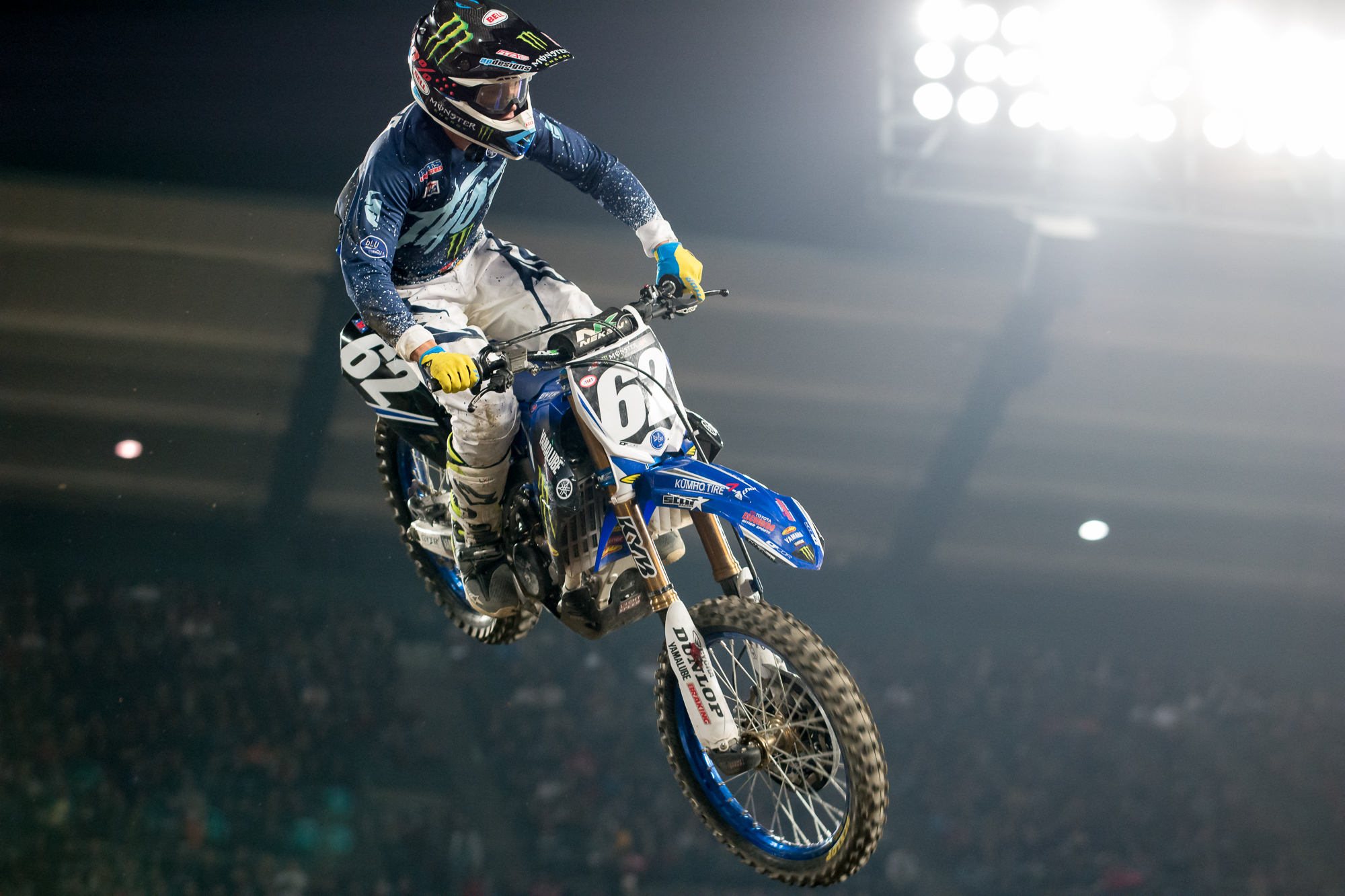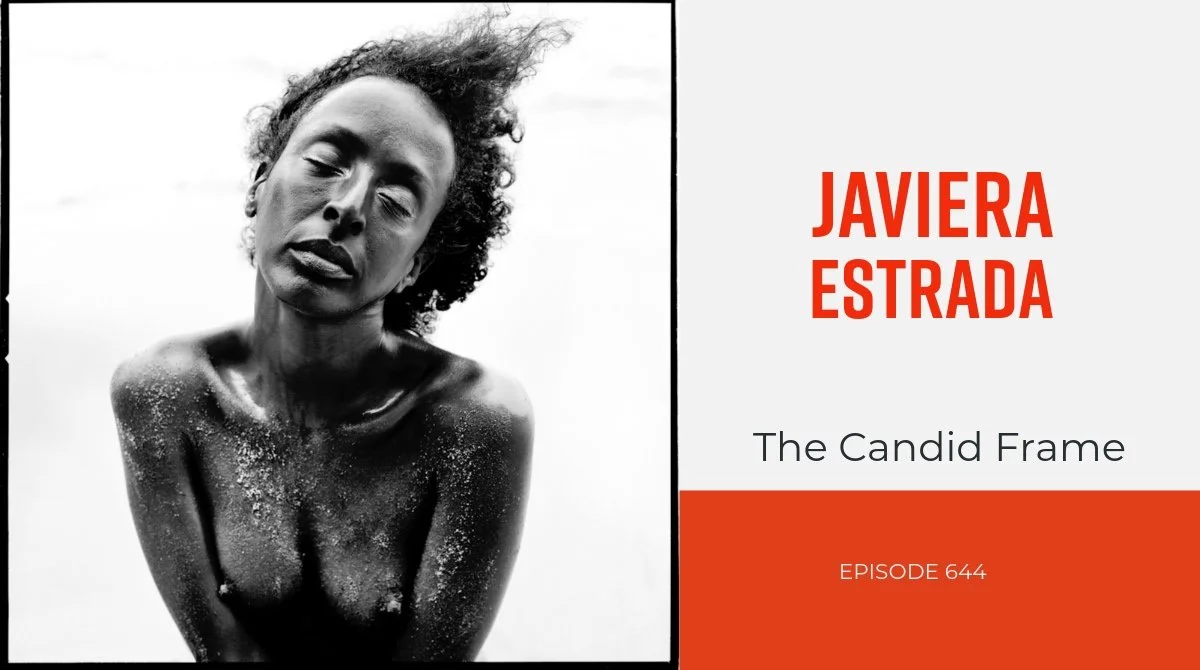When I was the offered the opportunity to photograph a Supercross event in Anaheim, I welcomed the opportunity to photograph outside my wheelhouse. I had photographed some sports in the past but had often produced lackluster results. This was an opportunity for redemption.
I remembered the mistakes I had made in the past, much of which revolved around camera settings. I was determined to not make those errors again and to instead create photographs based on my strengths rather than my weaknesses, which in this particular case was inexperience shooting motorsports.
ISO and Shutter Speed
1/2500 @ f/2.8 ISO 3200
One of the first things that I addressed was my minimum shutter speed that I would use on my NX1. In the past, my mistake had been shooting at too slow of a shutter speed. Though 1/250 sec might be enough for street shooting, when photograph sports, it wasn’t enough. The combination of fast action and the quick abrupt motion of the camera resulted too easily in soft images. Either the subject was moving too fast or camera shake reduced sharpness. All too often, I discovered that though the image looked acceptably sharp on the camera’s LCD, it would be unsharp on the computer screen. I wasn’t going to make that mistake again.
I started off by shooting in shutter priority and set my shutter speed for 1/1000 second. I allowed the camera to choose the aperture and set the ISO for automatic, leaving the camera to adjust both of those settings on the fly.
Later, as I became more familiar with the lighting in different points on the track, I switched to manual exposure mode to have greater control over both aperture and shutter speed. By leaving the ISO to auto, the camera was free to adjust the ISO which often ranged between 1250 to as high as 6400, all ISOs which I knew would produce good quality files despite the increase in noise.
Focusing
The next issue I addressed was the focus. Besides setting my AF system to continuous AF, I opted for zone focusing, rather than my usual spot focusing preference. Because of the speed of the motorcycles, I needed the larger AF target area. By choosing the zone focus system, I could easily begin tracking my subjects as they shifted within the frame.
1/1250 @ f/2.8 ISO 2000
Because of the nature of the track, the athletes could appear and disappear behind mounds of dirt. This was especially the case when they hit a jump that would send them high into the air. I had to anticipate where they would be when they began their ascent in order for the camera to begin its autofocus tracking. Having the larger zone area for focus detection helped to improve my chances of keeping them acceptably sharp.
Drive Mode
I set my drive mode to continuous at the NX1’s top setting of 15 frames per second. I did this with some hesitancy as I didn’t just want to burn through frames just because I could. I wanted to rely on good timing. The camera also does not have an unlimited buffer and so I had to gauge exactly when to begin depressing the shutter release button to ensure that the camera didn’t slow down at the critical moment.
Metering and White Balance
I left the camera’s metering mode to its evaluative metering and the white balance to automatic as I felt that the camera was able to deliver great results on both counts. There were only a few occasions when because of severe backlighting that I needed to apply some exposure compensation to ensure proper exposure for the subject.
1/1250 sec @ f/3.2 ISO 6400
Composing
With all the technical issues taken care, I was able to dedicate much of my time to creating strong and effective compositions. Because I had press credentials for the event, I had full access to the course.
Because this was a professional sporting event, there was an abundance of signage and branding everywhere. There was also lot of equipment and rigging to be found which cluttered up the background. So as I moved around, I was often looking for ways to produce as clean a frame as possible. Though the 70-200mm equivalent focal length provided nice compression and some softening of the background, I still needed to be aware of what was behind the riders.
Within a short period of time, I was confident that I would produce a well-exposed frame that was sharp. However, I wanted to challenge myself and the way I wanted to do that was to include multiple riders in the frame. I quickly found that this was no easy feat.
It was difficult because they were moving so quickly and their relative positioning was so unpredictable. However, as they moved around the track, I determined key points where multiple riders would appear and which might provide me the opportunity that I was looking for. Then I needed to watch for moments where riders turned or jumped in close proximity. Once that happened, I not only needed to begin shooting but also carefully refine my composition so that all the subjects stayed within the frame. I also looked for enough spacing between them so that the riders didn’t overlap.
By the end of the evening, I felt confident that I had produced some strong and effective photographs of the event. And while culling the images later in Lightroom, I was doubly pleased to see how few images had been ruined due to softness. There were of course images that were out of focus, but they were a fraction of the total number of images that I produced that night.
Most importantly, I felt great that despite my motorsport inexperience, I had taken what experience I did have and leveraged it in a way that allowed me to succeed.
1/1000 sec @ f/5 ISO 6400






















When photographer Frank Jackson first picked up a camera, he discovered more than a tool—he found a way to translate how he sees and feels the world. Known for his street photography and portraiture, Frank has built a career rooted in curiosity, observation, and a relentless drive to make work that is true to himself. His images often balance rawness and elegance, revealing moments that might otherwise pass unnoticed.